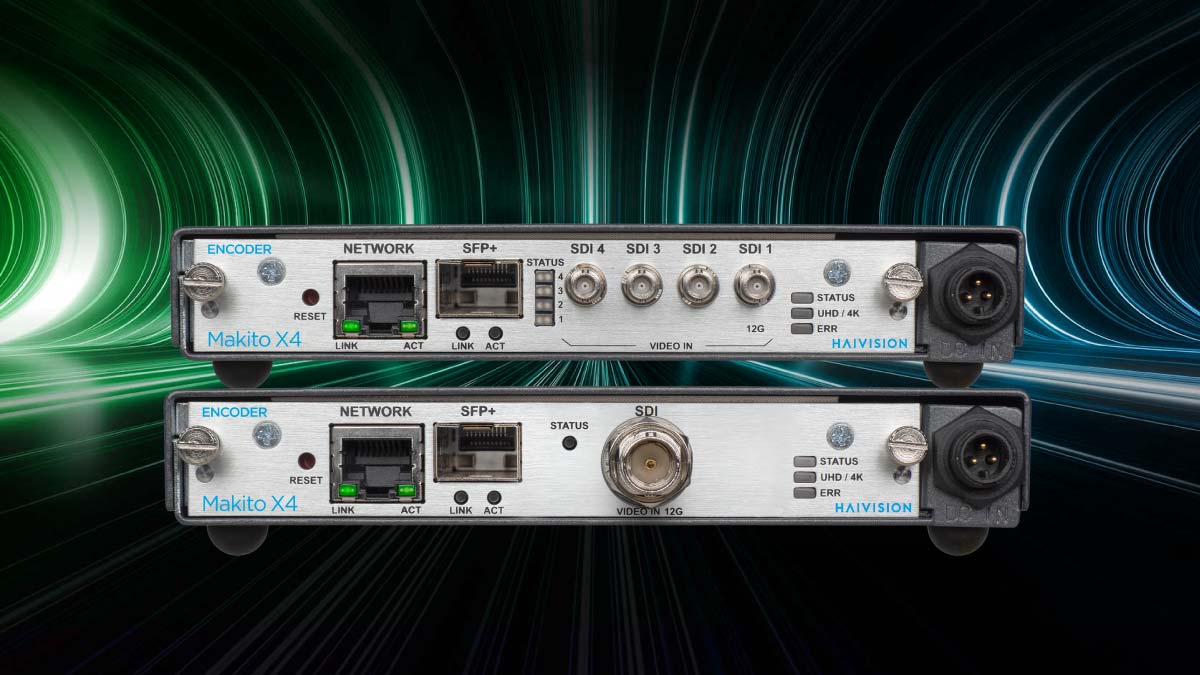In this post, we’ll give you a high-level overview of what HEVC/H.265 is and explain when you need a hardware version of an HEVC video encoder. Let’s get started with the basics.
What is HEVC?
HEVC or H.265 is a video compression codec. Its precursor, AVC or H.264 was the most widely used codec for a long time but, since its release in 2003, resolutions have increased considerably, so it is now generally considered to be an aging compression scheme. The move towards 4K resolutions has necessitated a new level of compression efficiency. Enter H.265, more commonly referred to as HEVC, High Efficiency Video Encoding.
Watch Ghislain Collette, our Vice President of Product Management explain more about HEVC here:
Perfect for 4K
Building on the concepts behind H.264, its successor—H.265 or HEVC—is rapidly becoming ubiquitous, thanks to the proliferation of 4K UHD and HDR content. At the same level of visual quality, HEVC offers significantly improved compression, allowing video to be encoded at half the bitrate of H.264, making it twice as efficient. When using the same bitrate as H.264, HEVC delivers noticeably better visual quality. This is especially important for 4K video, which requires substantial bandwidth and storage space when encoded with H.264. HEVC makes streaming 4K and HDR video much more practical, delivering the best quality possible.
H.264 and HEVC video compression techniques analyze spatial repetition within frames to avoid transmitting the same information repeatedly across a sequence of frames. HEVC uses a more advanced approach to motion estimation, spatial resolution handling, and other encoding parameters, resulting in up to 50% greater bitrate efficiency. Although HEVC is more computationally intensive than H.264, modern hardware processors—such as those in the Haivision Makito X4—can easily encode HD and 4K content in HEVC in real time with very low latency, enabling bandwidth-efficient video streaming.
Why Do I Need a Hardware Encoder?
The answer really depends on what you’re looking to achieve. For applications that don’t require low latency, such as file-based workflows, using software-based encoders is sufficient. However, for professional broadcast applications such as live sports production, hardware encoders offer dedicated processing power for encoding live video from SDI, HDMI, or SMPTE ST 2110 inputs and will allow broadcasters to stream higher quality video at lower bitrates at low latency. Example use cases of dedicated HEVC encoders include:
Broadcast – for contribution of live video for live broadcast productions, remote productions, live remote interviews
Enterprise – for streaming your all-hands meetings and distributing internal communications video content or IPTV across your organization
Defense – for mission-critical Intelligence, Surveillance and Reconnaissance (ISR) video applications
Next Generation Video Encoding
Built on the heritage of Haivision’s award-winning Makito series of video encoders, the Makito X4 video encoder can encode 4K UHD, multi-camera HD, and HDR video in real-time with latency as low as 25ms. Packed with the latest technologies to ensure secure, low-latency, broadcast-quality video, the Makito X4 is an extremely powerful and highly versatile HEVC/H.265 and AVC/H.264 encoder. Designed for the most demanding real-time applications, including remote production and broadcast contribution to both on-premise and cloud production workflows, it can securely deliver live video streams over any IP network, including the public internet. Paired with a dedicated Makito X4 Decoder, users can achieve end-to-end stream reliability, ultra-low latency, and multi-camera stream synchronization for seamless video delivery.
Optimizing Streaming Performance With SRT
One of the tools that broadcasters and other video professionals are using in their workflows to increase quality and lower bandwidth is Secure Reliable Transport (SRT). SRT is an open-source video transport protocol invented and developed by Haivision which provides end-to-end security and optimizes streaming performance over unpredictable networks. Despite compression tools like HEVC/H.265, unreliable networks can increase video latency, and cause jitter and packet loss, lowering the quality of the video at the receiving end. Using SRT helps to mitigate these issues, ensuring the delivery of low latency, pristine quality video, no matter what the network.
Choosing the Right HEVC Video Encoder
Depending on your target use case, there are many factors to carefully consider when selecting the right HEVC video encoder. These include security, reliability, flexibility, latency, picture quality, extensibility, scalability, portability, and more. In addition to fixed encoding solutions, Haivision also offers mobile video transmitters that support HEVC, providing the flexibility needed for on-the-go live video contribution over bonded cellular networks.

